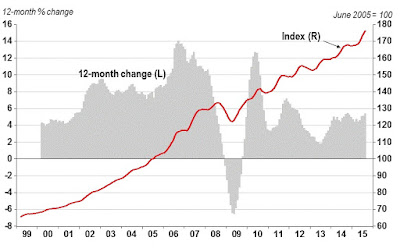We recently concluded our first
Fraud Awareness Month during which we dedicated our social media to fraud
awareness and increasing the dialogue between lenders and brokers about types
of mortgage fraud in Canada that are prevalent in the industry. It was a huge
success!
So many financial professionals
chimed in with amazing insights and feedback that we wanted to highlight some
of those dialogues.
Brokers acknowledge that
lender/broker relationships are incredibly important. Lenders who receive
business primarily from brokers count on brokers as a first line of defense.
This is one thing that is very attractive about accepting mortgages from
brokers – they do so much of the legwork. One thing that came out of Fraud
Awareness Month was that brokers across the board really care about the quality
of the deals they bring forward to their lenders and are summarily committed to
deploying whatever tools they have in their arsenal to combating mortgage fraud
in Canada.
Many are even leveraging the
most current technology, incurring personal expense to take extra measures when
performing due diligence including verifying:
·
Home ownership
information
·
Registered mortgage
information
·
Sales history
information
·
Value of the property
and more
Many are using much of the same
technology that you use – like AVMs, running property searches, even
independently picking up the phone to verify employment. Mortgage fraud in
Canada and as a whole has been acknowledged across the board as a major issue
and it seems financial professionals on every level are realizing that we all play
a valuable role in the process of spotting fraud.
Working with brokers the likes
of whom were vocal during Fraud Awareness Month can give you peace of mind that
you are going to receive deals that close and are unlikely to have issues
later. How can you know if you’re dealing with one of these types of brokers?
When interviewing new brokers –
ask lots of questions. What is their position on mortgage fraud? Do they see
mitigating mortgage fraud as one of their roles in the mortgage process? What
tools do they deploy to combat mortgage fraud?
Also, sharing with brokers the
tools you use to mitigate mortgage fraud (like Purviews fraud check as one
example) is a great way for brokers to seek out broker versions of these tools
so that your information is aligned with their information.
Increased alignment, dialogue
and sharing on issues surrounding mortgage fraud in Canada lead to strong
relationships and a healthier Canadian financial industry.
When it comes to conquering
mortgage fraud, we all play a roll, and working together makes it that much
easier. Check out how Purview For Lenders contributes to the challenge: http://lenders.purview.ca/.







